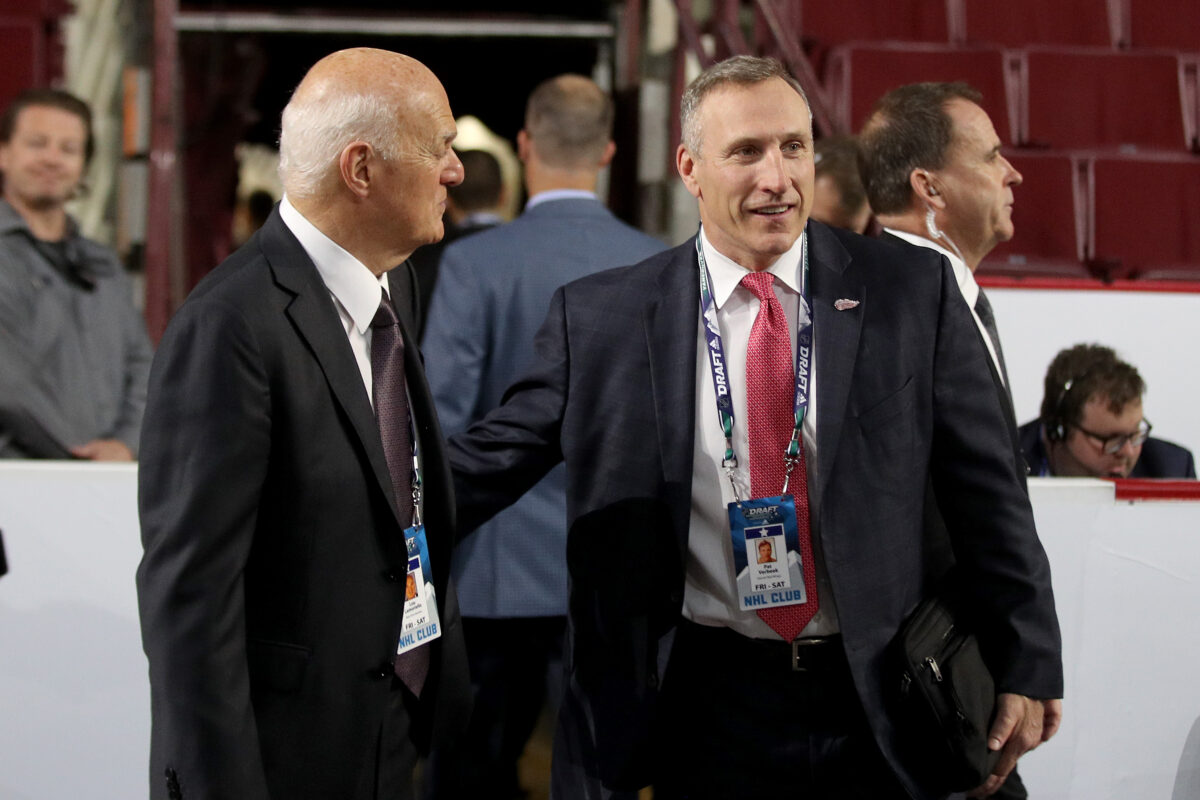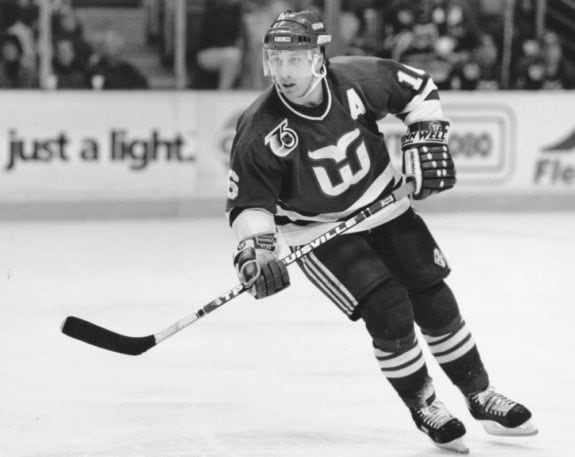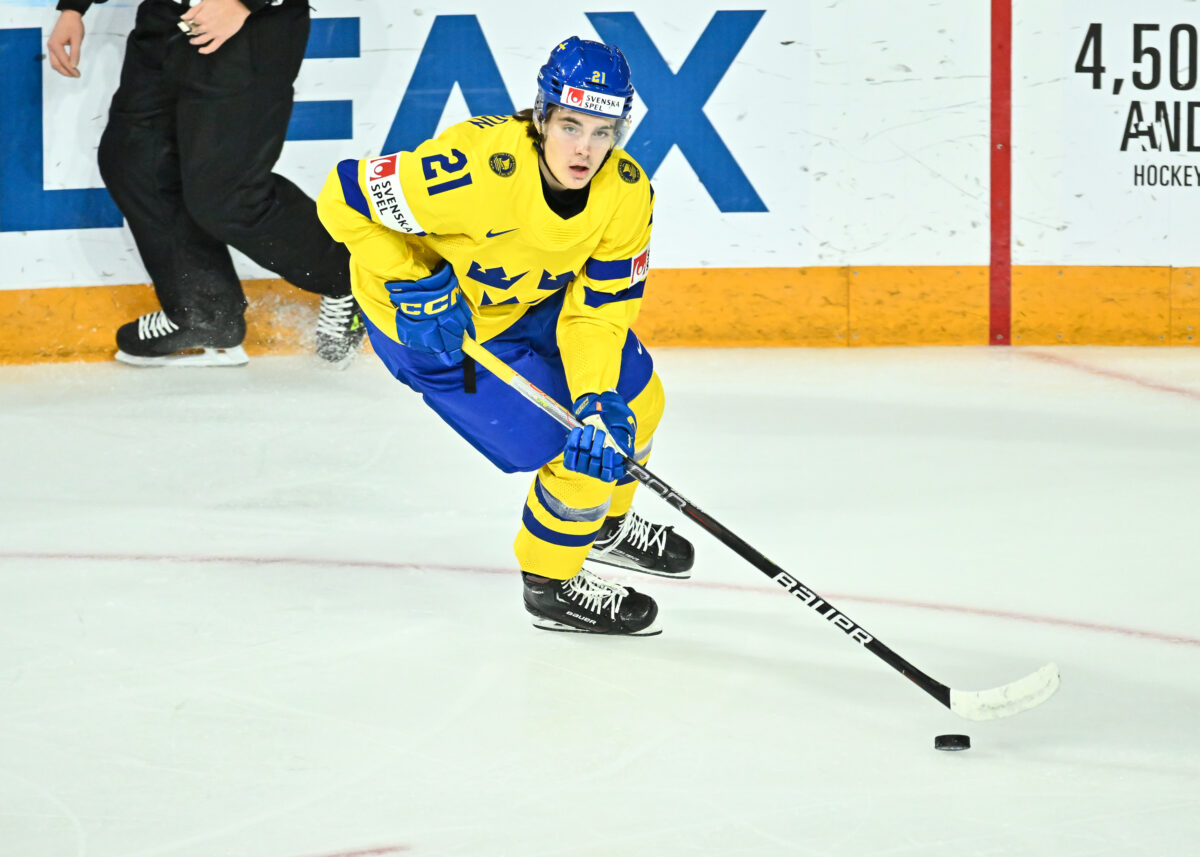What’s in a name? Or better yet a nickname? Anaheim Ducks general manager Pat Verbeek can tell you. During the mid-1990s, when playing for the New York Rangers with Ray “Big Ball of Hate” Ferraro, goalie Glenn Healy came up with “Little Ball of Hate” for the 5-foot-9 antagonist and it quickly blossomed from there. “There’s something about it that I liked. It spoke to that I wasn’t an easy player to play against”, he once told reporters. “It serves a dual purpose. Kind of makes people stand away a little bit” (from ‘There’s no fluff’: Ducks GM Pat Verbeek, the ‘Little Ball of Hate,’ has evolved into a shrewd executive, The Athletic, Feb. 17, 2022).
The gritty right winger played 20 seasons in the NHL, registering 522 goals and 1,062 points along the way. Oh, and he also accumulated close to 3,000 penalty minutes so the nickname is somewhat warranted. Verbeek was Brad Marchand – before Brad Marchand. He was that hard-nosed player that every team craved, who could score big goals but also get in the heads of opposing players at key moments during games.

Verbeek’s NHL career didn’t exactly start out with much fanfare. He was a little-known third-round draft choice of the New Jersey Devils in the 1982 Draft but his willingness to play the game at an all-out level quickly earned him playing time with the club. In 1983, his second season in the league, he potted 20 goals to go along with 27 assists in 79 games, while also showing his physical side with 158 penalty minutes. Early on he earned the reputation of a hard-nosed grinder – the type of player who wasn’t afraid to do the dirty work to help his team win. His willingness to battle along the boards to retrieve pucks endeared him to his teammates.
You hated him as an opposing player but would love him on your own team. Verbeek topped the 40-goal plateau on three occasions during his career and is the epitome of the quote “hard work pays off.” In 1999, he helped lead the Dallas Stars to their first Stanley Cup in franchise history and is currently the only player in NHL history to total over 500 career goals and 2,500 career penalty minutes.
Down on the Farm
When you dig into the Sarnia native’s upbringing it becomes quite clear what molded him into the type of player he was. Verbeek was raised on a farm in southern Ontario that still operates to this day, moving close to 1,500 pigs a week. He was put to work at the age of five, tending to the cows in the early morning haze as his father Gerry looked on. In 1985, while working on the farm, Verbeek’s thumb was completely severed by an auger in an offseason accident. Thanks to his brother’s and father’s quick actions, surgeons were able to re-attach it as he avoided a career-ending catastrophe. This is how the foundation of determination and toughness was built from within.
Built From Within
No player in the history of the NHL spent as much time scoring goals and pounding glass in the penalty box as Pat Verbeek did. The two-time All-Star’s career ended after the 2002 season – with stops in Hartford, New York, Detroit and Dallas on his resume. What was next? He felt he still had something to give to the game. The perseverance and determination were in his blood, how could he use that for the next chapter of his career?

Verbeek moved upstairs to the hockey operations department where he spent the next 16 seasons as an executive for the Detroit Red Wings and Tampa Bay Lightning. He was a key asset as the assistant general manager to Steve Yzerman where the pair helped lay the foundation for Tampa Bay’s back-to-back Cup wins in 2020 and 2021. After spending the three previous seasons as the assistant GM (2019-22) alongside Yzerman again in Detroit, Verbeek felt he was ready to branch out and take the reins of an organization himself. The experience was there, but was the opportunity?
The West Coast Comes Calling
Perseverance, dedication, and character – these were the qualities owners Henry and Susan Samueli were searching for when GM Bob Murray unexpectedly resigned due to personal issues with alcohol and allegations of misconduct during the 2021-22 season. Enter “The Little Ball of Hate.” Verbeek will be the first to tell you he stepped into an ideal situation. A young core was already established when he took over in Anaheim as the Ducks were transitioning out of the Ryan Getzlaf era. Trevor Zegras, Mason McTavish, Jamie Drysdale, Olen Zellweger and Troy Terry were already in the fold, with plenty more blue-chip prospects on the horizon. In his first draft with the organization in 2022, Verbeek landed defenseman Pavel Mintyukov and center Nathan Gaucher, who both appear to be foundational pieces of this rebuild.
“It’s going to be easier,” Verbeek said. “Certainly you don’t have to come in there and look to take a long time. There’s good players in the NHL (roster), and there’s also good players in the minors. There’s also players that have been drafted. So there’s lots coming to support the growth of this team. That’s truly what I’m excited about … . (A typical rebuild) takes five years. I’m hoping to shorten that, but that’s kind of the reality of how long it really takes you to be a consistent, serious contender” (from ‘Ducks hire Pat Verbeek as general manager, LA Times, Feb 3, 2022).
Key Moves Had to Be Made
Verbeek hit the ground running, having to make quick decisions on key players like Rickard Rakell, Hampus Lindholm and Josh Manson – all of whom were moved for future assets. “I would look at this as being in the middle of a rebuild,” Verbeek said. “We have strengths. We also have weaknesses, so the goal is going to be to make sure we keep building on those strengths, and then start to eliminate the weaknesses.” He also wasted no time moving on from the previous regime’s batch of projects in Maxime Comtois, Josh Mahura, Sonny Milano and Sam Steel.
Verbeek’s Franchise Altering Decision
The 2022-23 season saw the team take a big step back – finishing the season with a league-worst 58 points. Verbeek decided it was time for a fresh voice to lead the club behind the bench. Dallas Eakins was dismissed and the organization brought in first-time NHL head coach, Greg Cronin. He is a former NHL assistant and a former bench boss in both the American Hockey League (AHL) and at Northeastern, where he earned the reputation of being an inspiring voice to a younger generation of hockey players.
The 60-year-old spent the last five seasons behind the bench leading the Colorado Avalanche’s highly successful AHL affiliate and once coached a young superstar named Paul Kariya at Maine back in the late 80s. “I personally think this has been long overdue for [Cronin],” Verbeek said. “He brings a passion and an energy that is contagious. I was looking for someone that could develop a culture with high standards, work ethic and accountability. Greg has an outstanding track record in those areas” (from AP News, Greg Beacham, June 5, 2022).
While I’m sure Cronin was hoping to start his career in Anaheim with the generational talent of a Connor Bedard – along with one of the top prospect pools in the NHL – the organization was on pins and needles as the draft lottery unfolded. But as luck would have it, the Ducks settled for the second-overall pick. This was where a bold decision had to be made for the future of the franchise. The draft was loaded at the top with several potential superstars. Would Verbeek go with Adam Fantilli – the Hobey Baker Award winner and the consensus number two pick? Or how about Matvei Michkov – the Russian superstar whose appearance in North America will be delayed until the 2025-26 season? Then there was Leo Carlsson, the uber-talented, 6-foot-2 Swedish playmaker who was projected to go in the top four as well. In the end, Verbeek went with the Swede.
Related: 3 Takeaways from Anaheim Ducks’ 2023 Development Camp
“After a while (and) long discussion, it was unanimous with our staff in who the player was going to be,” Verbeek stated. “Was he my guy for a while? I wouldn’t say that. I think that we went through the process and we went through all debate. Really talked it out. We probably made our mind (with) a couple weeks left to go into this process” (from ‘Anaheim Ducks draft Leo Carlsson — How and why they reached a ‘unanimous’ decision, The Athletic, June 28, 2003).

Carlsson projects to be a top-line center in the near future and his defensive game already has scouts drooling about his Selke potential. The 18-year-old skated this past season in the Swedish Hockey League (SHL) – where it is highly uncommon for teenagers to get playing time – and put up 25 points in 44 regular-season games for Orebro before raising the level of his game (one goal, eight assists) in 13 playoff games. His 25 points were the fifth-most ever by a draft-eligible SHL player, trailing only Daniel Sedin, Henrik Sedin, Elias Lindholm and Nicklas Backstrom. Not a bad leaderboard to be a part of.
“We were excited about his high hockey IQ,” Verbeek said. “His creativity. I think he has a really nice combination of being able to make other players around him better and being able to provide the offense, not only from a playmaking standpoint but from a goal-scoring standpoint as well. I was really taken aback by his two-way game. Looking at him, we’re excited for the potential for him to be not only a dominant player in the offensive zone but also in the defensive zone as well.”
Carlsson has a contract with Orebro through the 2024-25 season, but first-round picks under the transfer agreement can still be offered to their NHL club first. The Ducks will most likely let him develop and gain strength while playing in the SHL for the upcoming season but don’t be surprised if he makes a little noise at camp this fall.
The Future Looks Bright
It’s pretty bright in Southern California this time of year as the team gears up for the start of training camp, but this upcoming season will have a new kind of glow for fans in Orange County. Verbeek played a starring role in free agency, landing two-time Cup champ, Alex Killorn as well as rugged defenseman and bad boy Radko Gudas, who starred for the Florida Panthers on their recent Cup run. On Aug. 2, ownership reinforced the commitment to building a winner by inking star forward Terry to a seven-year contract extension through the 2029-30 season. According to NHL sources, the contract carries a $7 million average annual value (AAV). The two-time All-Star is a big part of what Verbeek is cooking and he’s now locked down for the near future.
A new voice behind the bench also leaves some room for optimism – one of hope and rising expectations for a young core that will develop and mature for the future. The next two to three years are pivotal for this once-proud franchise, but the light at the end of the tunnel can be seen from afar. Big steps are being taken and a “Little Ball of Hate” will be leading the charge to one day make Ducks fans the “happiest fans on Earth.”
